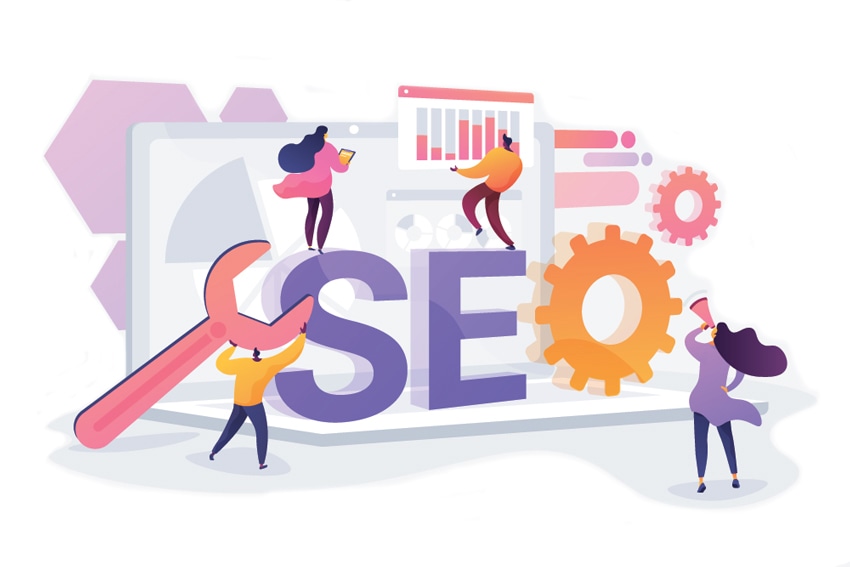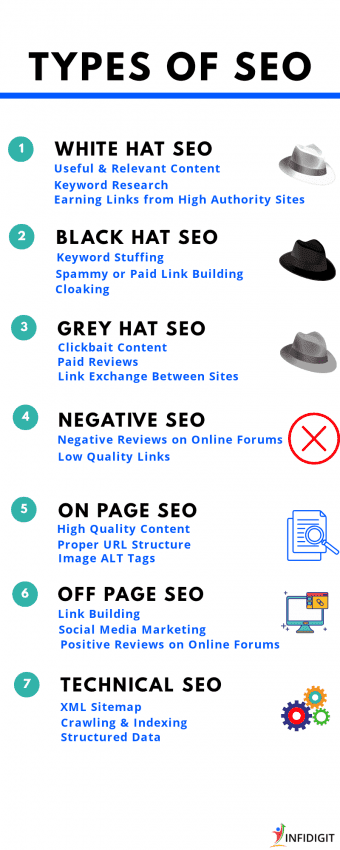Critical SEO Principles to Improve Your B2B Industrial Website’s Visibility and Ranking

Search engine optimization—SEO—is an essential part of digital marketing that enables prospective clients to find relevant content.
In the simplest terms, implementing SEO ensures that when someone Googles your product or service category, they find your website or content appropriate to the search terms they use. While the concept is simple, creating content that search engines prioritize is challenging, especially since creators publish billions of content daily.
With a high volume of competition for top search results or rank, winning the race to the top of the search page offers clear benefits. For example, the clickthrough rate (CTR) on the first position on a search page is nearly 40%, while the second position is around 18.5%, followed by just over 10% for the third position.
So how do you infuse your content with features that optimize it for SEO? Rather than rely on theory from online SEO resources laden with technical jargon, you can follow the strategies in this guide for practical insights to optimize your content for search rank.
Types of SEO & Which Matter Most for Your Business
Many marketers equate SEO with keyword stuffing (“black hat” SEO); however, there is significantly more to improving rank than that. Effective SEO attracts and engages the right readers by ranking high on search pages and keeping their attention to drive conversions once they click on a web page. Figure 1 below illustrates the different types of SEO:

The highest-integrity types of SEO are also the most effective and primary focus areas of this article: on-page, off-page, and technical. Each technique carries weight with search engines, and marketers should implement their combined advantages for efficient, high-quality prospect engagement that aligns with your positioning.
On-page SEO
This approach hinges on identifying authentic terms that ideal clients use to search for solutions and then incorporating them logically into useful content. You can use these terms in headings, the article title, the meta title and description, and the content itself.
The most effective method is targeting highly specific and audience-relevant terms with moderate search volume and low competition. Keyword search tools can quantify these levels as part of the keyword strategy. Selecting more general terms with high volume (for example “air filtration”) can result in your website appearing for B2C or search queries that aren’t relevant to your core business, diluting the quality of the leads the search generates, even if you’re able to rank highly for them. It’s typically much better to rank well for a larger number of highly specific, long-tail keywords (for example, “custom air filtration systems,” than to chase high-volume general terms. Balancing these factors and choosing search terms that align with your messaging and growth initiatives offers the highest likelihood of generating qualified leads from your SEO efforts.
Measure and test
It is helpful to test the effectiveness of keywords your strategy outputs before generating the content. There are a few guiding questions and principles to ensure the keywords are likely to deliver improved results:
- How is your site ranking now (baselining), and what incremental improvements could impact the most significantly?
- What areas need the most improvement and will take time to affect change?
- Do your customers use the keywords that you’ve identified in conversation?
- Google your new keywords. Do the results make sense, and if you had good content, would it likely show up?
- Do your primary competitors appear when searching for the keyword? Or do big box stores and/or businesses from other industries appear?
Off-page SEO
Off-page SEO involves listing your site in high-visibility areas that your ideal clients use. For example, one way to improve search results is to list your site with high-integrity organizations that provide users helpful content, such as BBB, Thomasnet, industry publications, and trade organization websites. In addition, it may make sense to invest in a paid source that elevates visibility.
Two other approaches for off-page SEO are other digital PR or event websites that drive traffic to your site or leveraging social media to add visibility (though social does not directly improve rank).
Local SEO
A subcategory of off-page SEO is local SEO. This strategy is most helpful for regionally-specific offers, brick-and-mortar stores, or regional distribution areas. Global search optimization prioritizes rank anywhere in the world in the virtual space. Conversely, local SEO targets a specific country or region in the physical world.
You can improve local SEO by completing a Google Business profile, adopting a consistent name/address/phone format (search engines can link these together), or using a listing management tool like Moz Local or SEMRush.
Technical SEO
Technical SEO, as its name suggests, focuses on the technical aspects of the site. These elements include site security (SSL/https), page speed, internal linking, image optimization, XML sitemap, and redirects for 404 page errors. Additionally, duplicate content hinders SEO.
Technical SEO elements improve search rankings in part by providing the user with a better experience with the site, which is one of the factors that Google uses to determine site quality. For example, internal linking overlaps with on-page SEO and helps provide website visitors with links to deeper content on your website, typically improving the session duration (the time a user spends on your website). . Search engines view this as a site providing high-quality content. Another example is adding alt text to images and using URLs for images and webpages that include your target keyword.
Content Quality vs. Quantity
Historically, digital marketers assumed pumping out a high volume of short content ( < 500 words) met readers’ assumed short attention spans. However, subsequent studies indicated that longer-form content (1500+ words) ranked better. The reasons for this improvement are that the articles had more relevant keywords and were more likely to be shared as thought leadership/authority pieces. This shift also led to search algorithm updates to prioritize industry-relevant terms vs. keyword count, meaning creators could focus more on simply creating great content!
High-quality content is more likely to engage and convert prospects, appear in search results, and demonstrate subject authority. However, it does take longer to create, and readers generally expect a deeper level of insight or analysis than a shorter piece. As a result, the entire article should be high-quality, as adding fluff or filler content to hit a higher word level will not realize the advantage.
A high-quantity approach still has a place, though. Search engines prioritize new and consistent website content additions, although not as heavily as in the past, and social media presence relies on frequent posting. Ideally, quality content can be produced at a regular and reasonably frequent pace, but avoid risking quality for speed, which does brand damage and leads to unsubscribes.
Create a content calendar that works for you
One of the most challenging aspects of SEO content creation is determining topics and the pacing of articles to post. Marketers often implement a content calendar to ensure content creation is not reactive and aligns with the overall marketing mission and strategy.
Content calendars can be managed in a variety of ways, but one of the simplest to implement is a simple shared spreadsheet like Google Sheets. A content calendar needs to manage topics as well as production, and should always include fields for an article’s working title (which may not yet be optimized for SEO) and identification of the deadline, writer, SME (technical subject matter expert), editor, keywords, intake/source material, and current status. In addition, calendars can use advanced techniques such as the content angle/direction, goal, benchmark articles, and the persona the article will target.
Another way to increase the frequency of content creation while not sacrificing quality is to repurpose content, splitting a long-form piece into an article, email, social post, webinar, or video or combining shorter pieces into a white paper or longer story. While this approach accelerates asset creation, it also ensures the messaging is aligned as the theme is consistent between the content forms.
SEO Principles to Increase Website Visibility and Rank
High-quality content can’t help your marketing goals if your target audience can’t find it. Implementing the practical techniques and strategies above will amplify your content and elevate your B2B website and brand visibility. For additional SEO tips and strategies and practical examples of the approaches in this article, view our recorded webinar on Critical SEO Principles to Improve Your B2B Website’s Visibility and Ranking.
Windmill Strategy is a web design company & digital marketing agency helping B2B technical, industrial, life science, and manufacturing companies achieve increased visibility, higher quality leads, and more significant marketing ROI through smarter web design. Our website design and B2B digital marketing approach go beyond “more traffic,” seeking out better traffic by gaining the attention of the specific niche groups of buyers and influencers that represent your best customers. We help our clients communicate and sell their complex products and services to multiple audiences through web design, digital marketing, and SEO. Working collaboratively with your in-house marketing and sales team, we design websites that drive leads and sales that result in overall business growth. Schedule a call to learn more.


